180 Towers Existed In The Middle Ages: Guardians Of The Italian City of Bologna
Bologna, Italy, a city rich in history and culture, boasts a unique skyline characterized by a series of medieval towers.
Among them, the most iconic are the Two Towers—Asinelli and Garisenda.
These towers, standing as sentinels over the city, provide a glimpse into Bologna’s storied past and its architectural prowess.
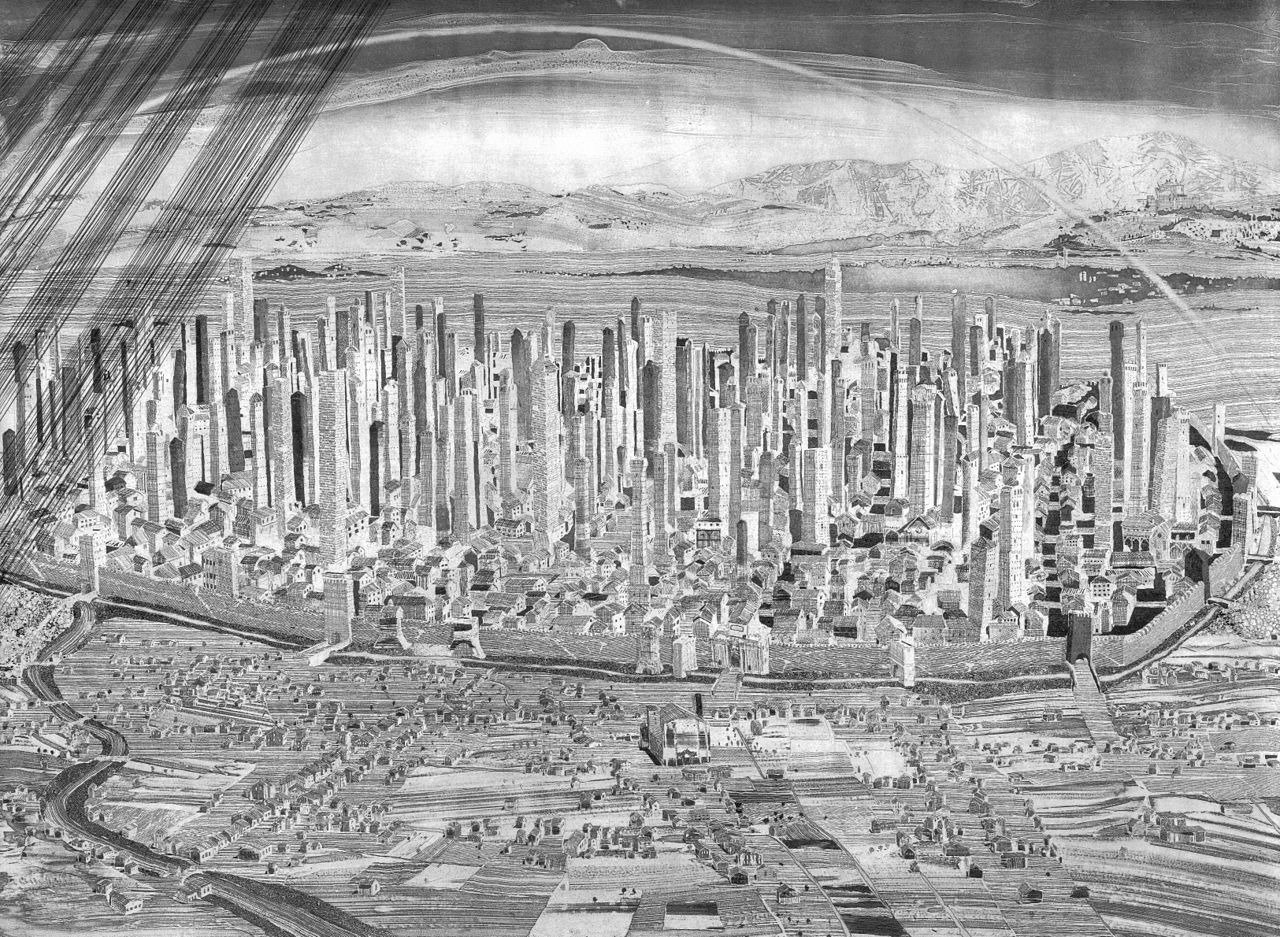
There were about 180 towers in Bologna between the 12th and the 13th century
Back in the 12th and 13th centuries, Bologna was a city teeming with towers.
At its peak, it is believed there were as many as 180 such structures.
These stone towers were very tall. The tallest of these structures reached an impressive height of 97 meters (318.2 feet).
Today, only about twenty towers remain, each with its own unique story and historical significance.

Construction Techniques
Building these towers was no small feat, often taking between three and ten years, even with the use of serfs.
Each tower had a square cross-section and required deep foundations—between five and ten meters—to ensure stability.
These foundations were reinforced with poles hammered into the ground, covered with a mixture of pebble and lime.
The base of the towers was made from large blocks of selenite stone, known for its durability.
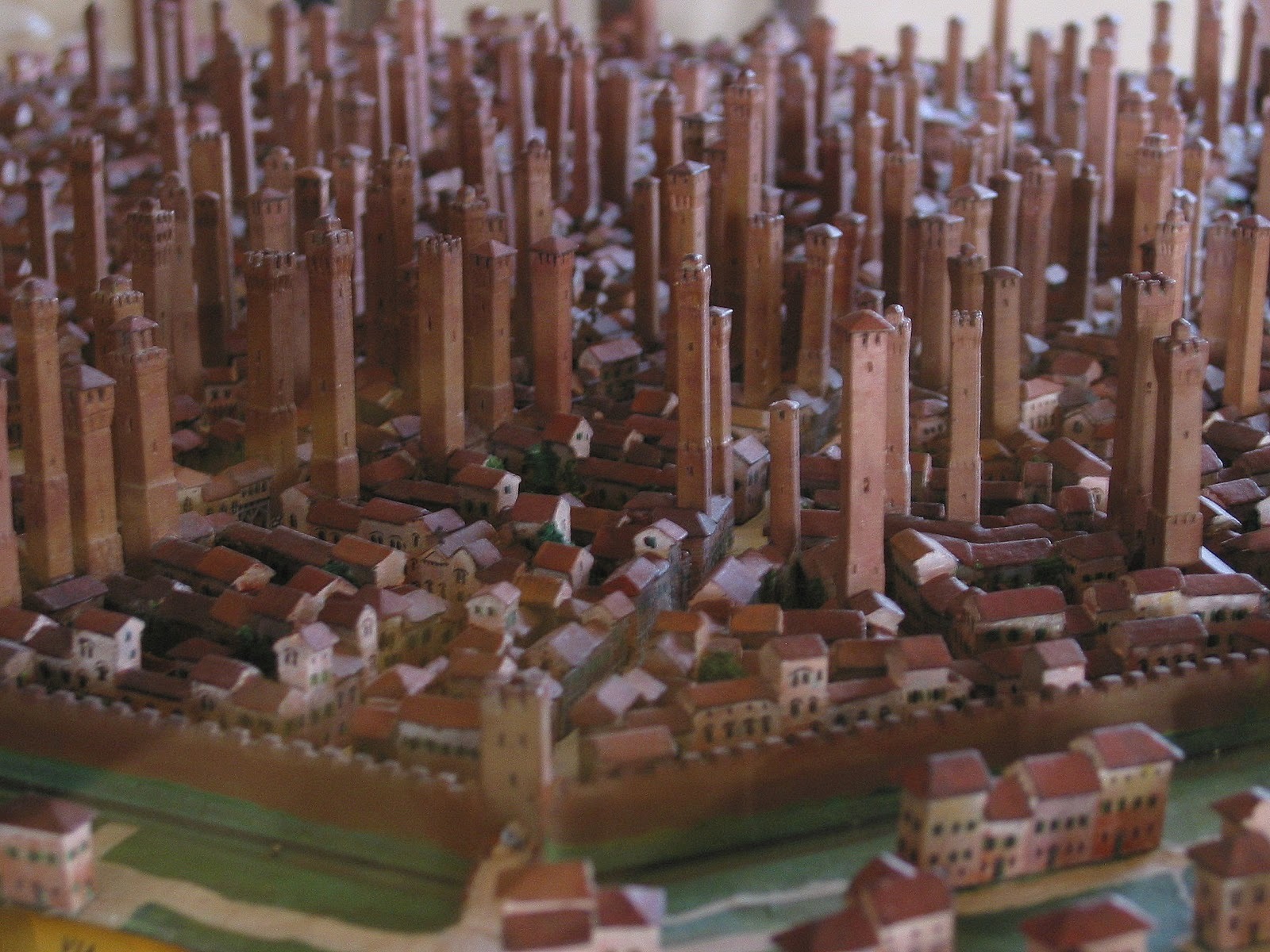
The walls of the towers were constructed using a method called “a sacco.”
This technique involved building a thick inner wall and a thinner outer wall, with the gap filled with stones and mortar.
This not only provided strength but also made the towers lighter and more stable as they rose.
Holes were often left in the outer walls to support scaffolding during construction, and these could later be used for wooden extensions or other structural additions.
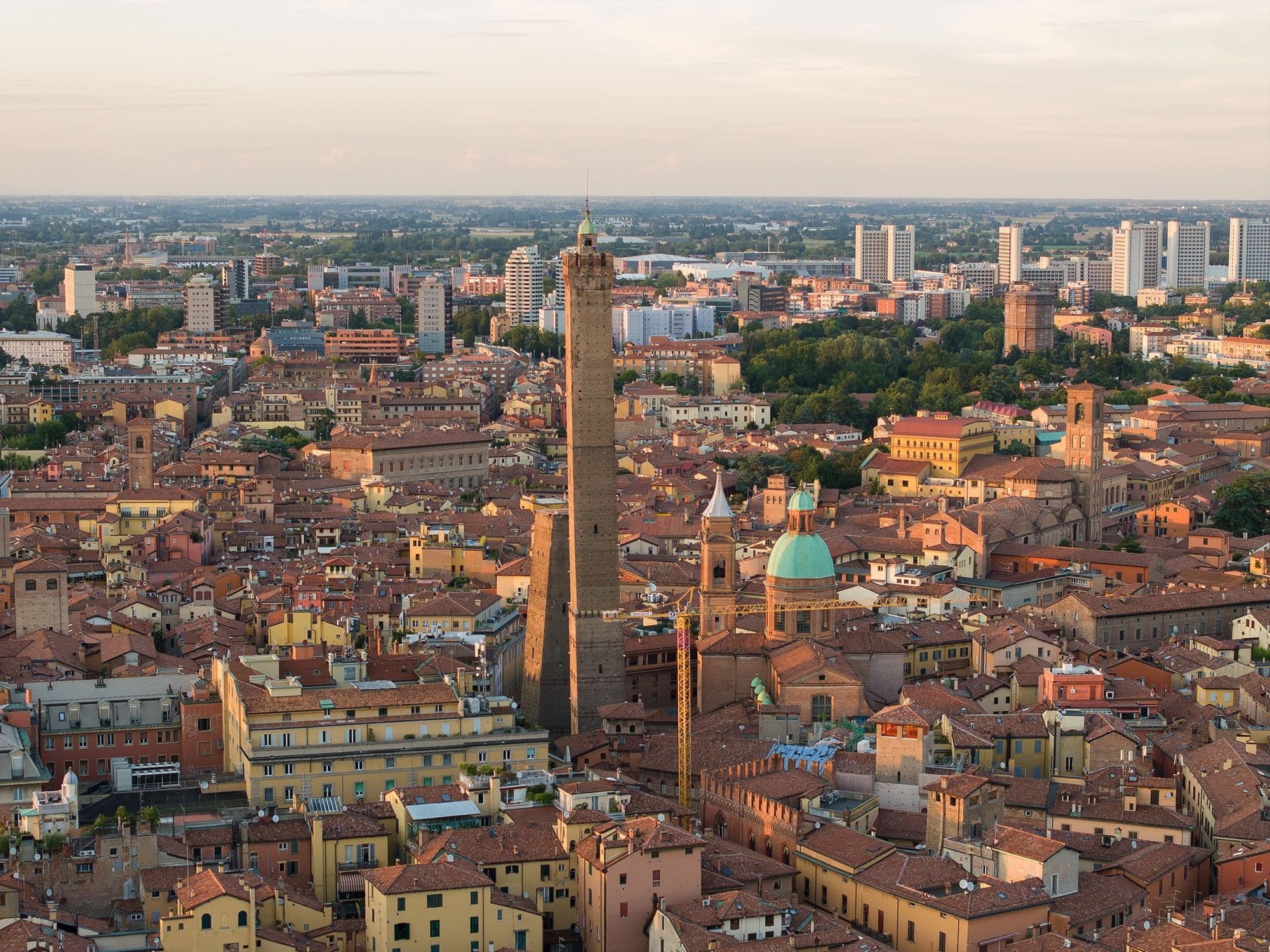
Why so many towers?
The proliferation of towers in Bologna has puzzled historians for years.
One leading hypothesis is that they were built for both offensive and defensive purposes, especially during the period of the Investiture Controversy—a major conflict between the church and secular rulers.
The towers offered strategic advantages, allowing families to defend themselves against rival factions.

However, these towers were also symbols of wealth and power. The richer the family, the taller and more impressive their tower.
They were the medieval equivalent of modern skyscrapers, flaunting status and prestige.
The towers were used not only for protection but also as a means of surveillance, to keep an eye on the city and surrounding areas.
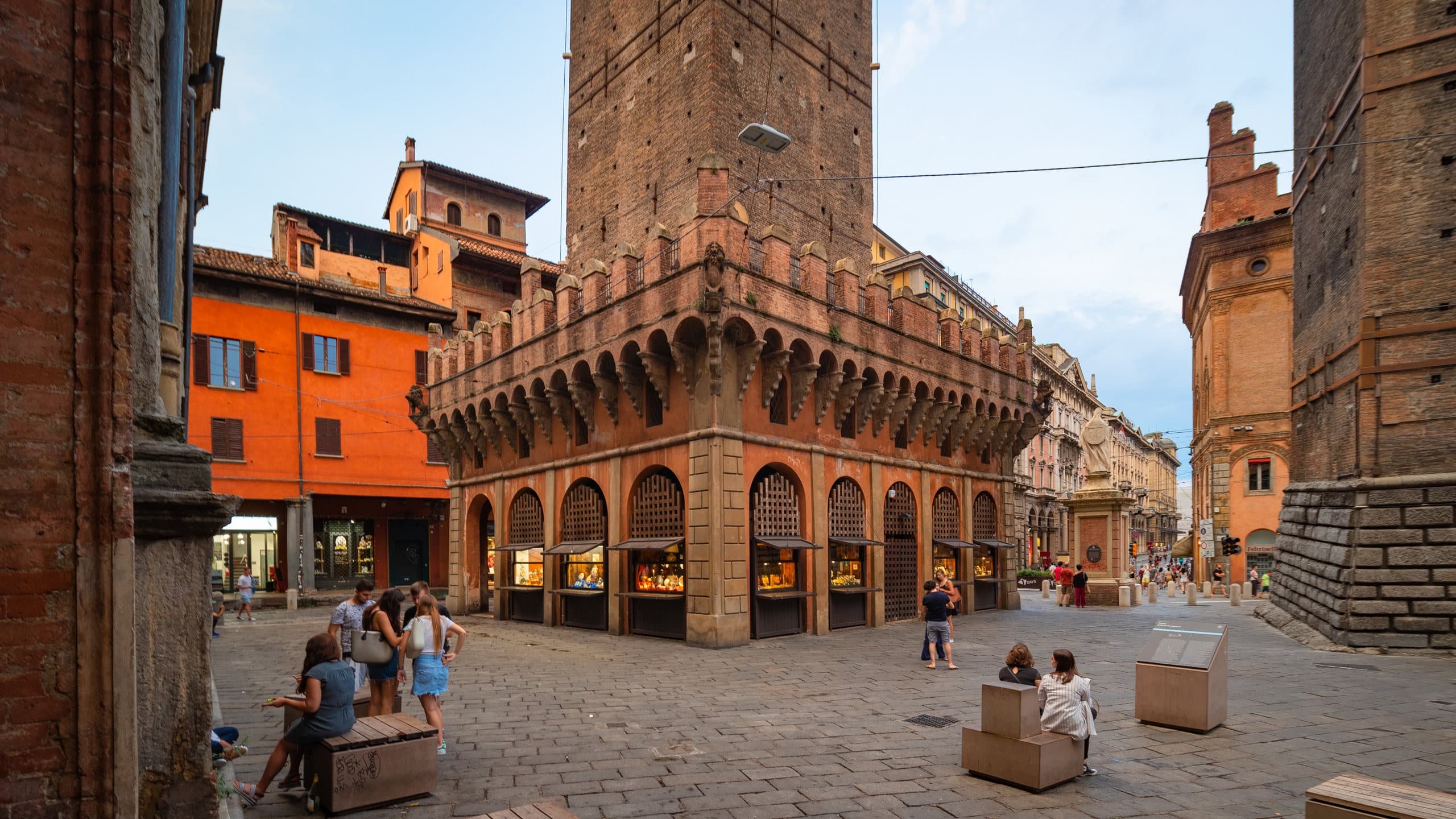
Many towers were taken down, demolished, or simply collapsed
In the 13th century, many towers in Bologna were taken down, demolished, or simply collapsed
Over time, these towers are used for different purposes, for example, being used as prisons, city towers, shops, or residential buildings.
The last demolitions occurred in the 20th century, part of an ambitious but ultimately ill-fated restructuring plan for the city.
Notably, the Artenisi Tower and the Riccadonna Tower at the Mercato di Mezzo were demolished in 1917.

The Two Towers: Asinelli and Garisenda
The Asinelli and Garisenda towers are the two most famous in Bologna.
They stand at the crossroads of the streets leading to the five gates of the old ring wall, known as the Mura dei torresotti.
This intersection was once the location of the early medieval Gate to the Via Emilia, the Porta Ravennate, which is now commemorated by the nearby Piazza di Porta Ravegnana.

The Asinelli Tower
The Asinelli Tower is the tallest, reaching 97 meters (319 feet).
This tower was built between 1109 and 1119 by the Asinelli family.
It has had many uses over its 900-year history.

It has been a defensive stronghold, an observatory, and even a World War II watchtower.
Nowadays, you can climb its 498-step staircase for a stunning view of Bologna’s medieval rooftops and, on clear days, the distant Venetian Prealps.
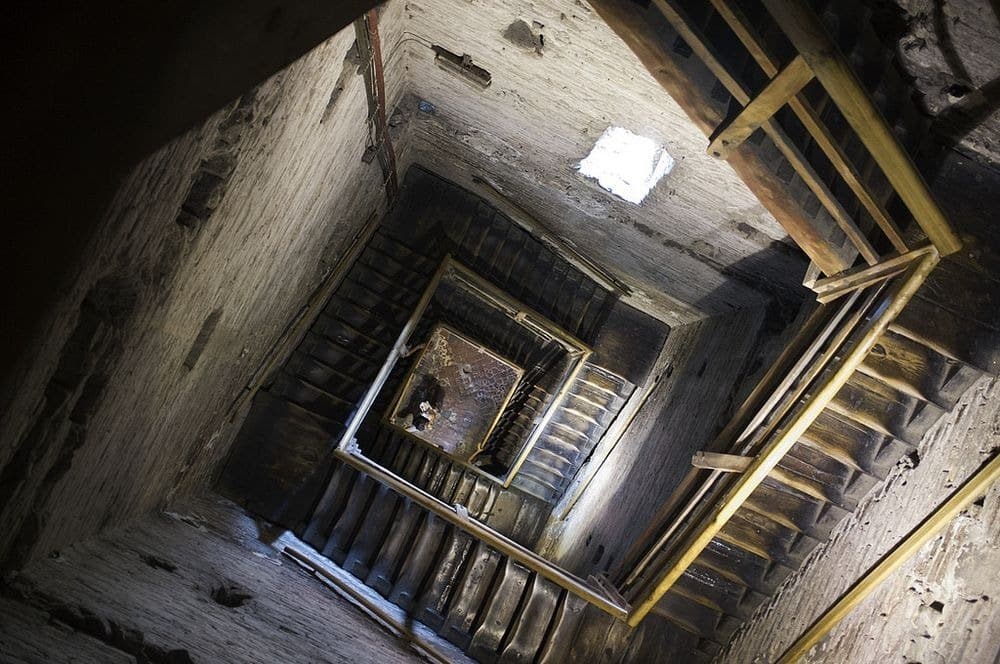
The Garisenda Tower
The Garisenda Tower, originally as tall as the Asinelli, now stands at 48 meters (157.5 feet).
Its height was reduced in the 14th century when the ground started to settle beneath it, giving it a pronounced lean.
This leaning tower has fascinated many, including the poet Dante Alighieri, who mentioned it in his “Inferno.”

The remaining towers
Today, fewer than twenty of these medieval structures still stand
- The Azzoguidi Tower, also called Altabella (with a height of 61 meters (200.1 ft))
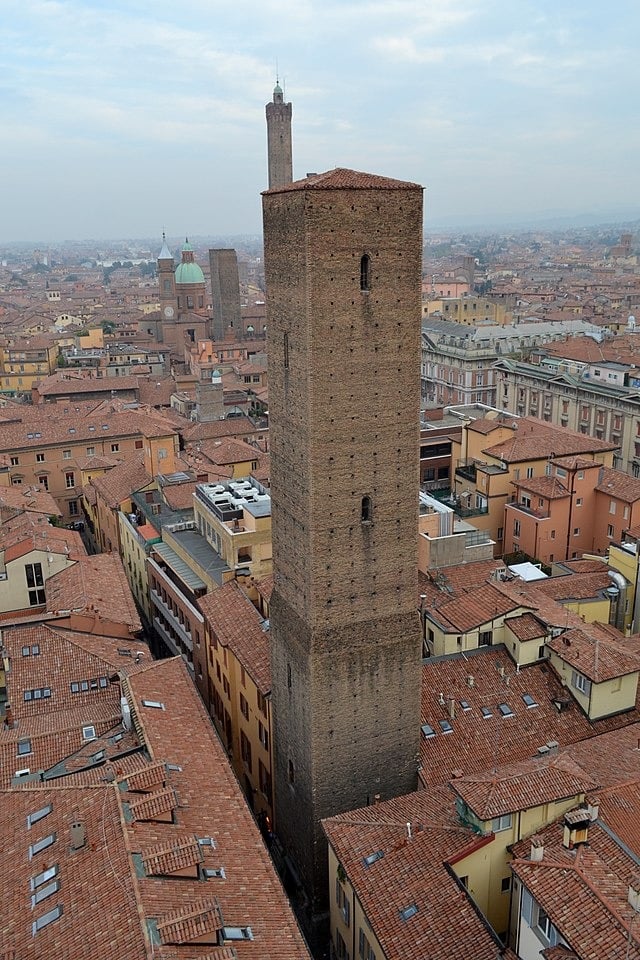
- The Prendiparte Tower, called Coronata (60 meters (196.9 ft))
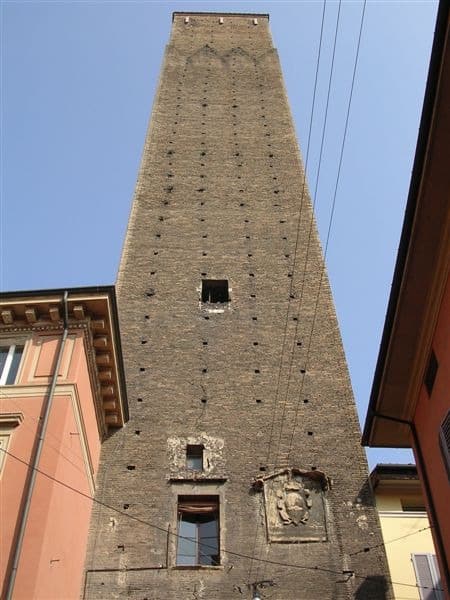
- The Scappi Tower (39 metres (128.0 ft))

- The Uguzzoni Tower (32 metres (105.0 ft))
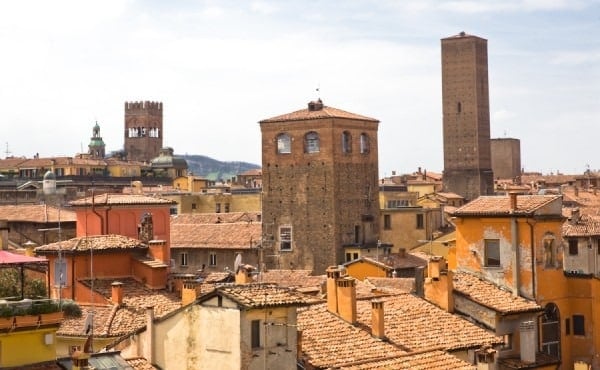
- The Guidozagni Tower

- The Galluzzi Tower

- The Asinelli Tower (97 metres (318.2 ft))
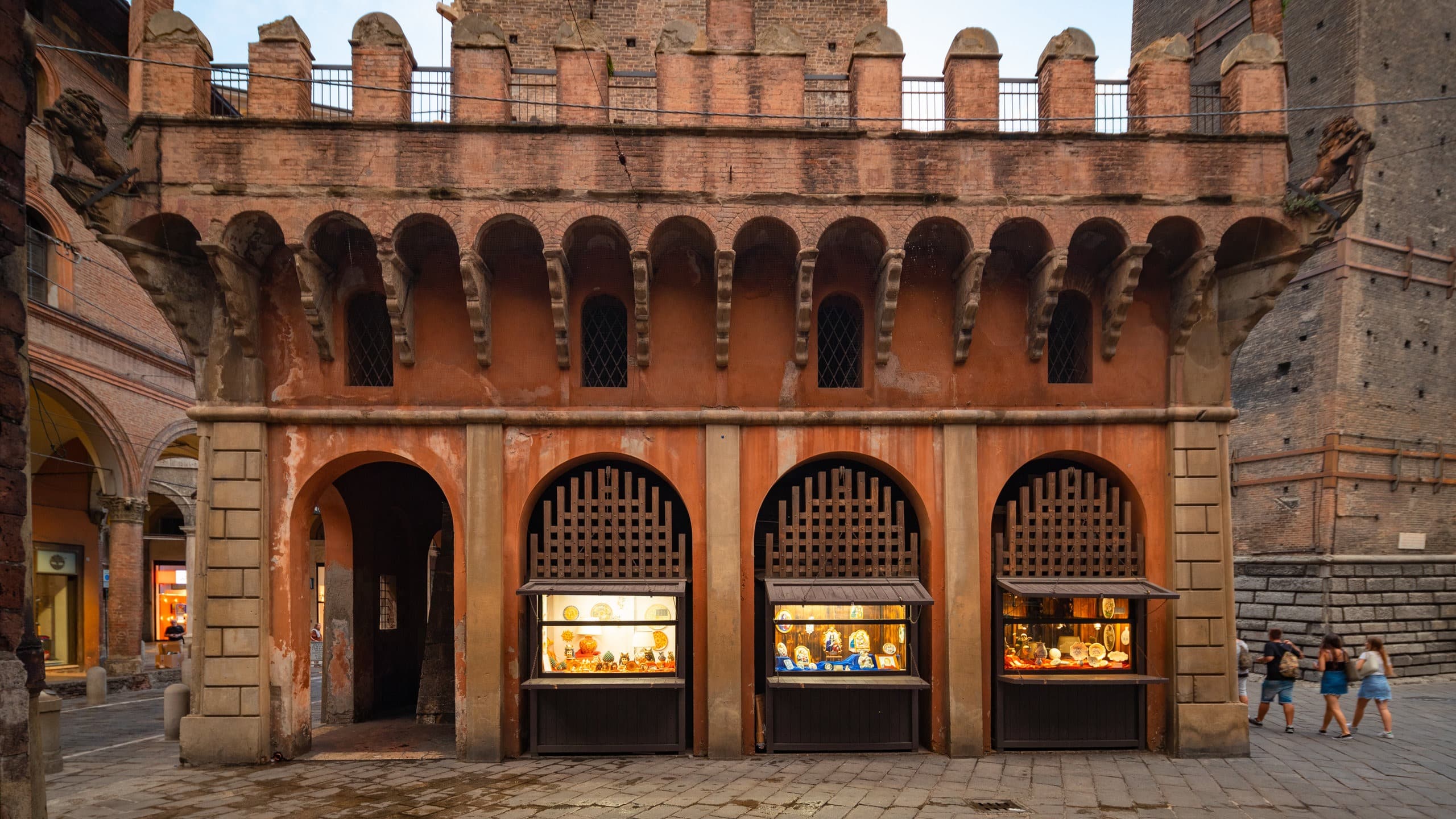
- The Garisenda Tower (48 metres (157.5 ft))


